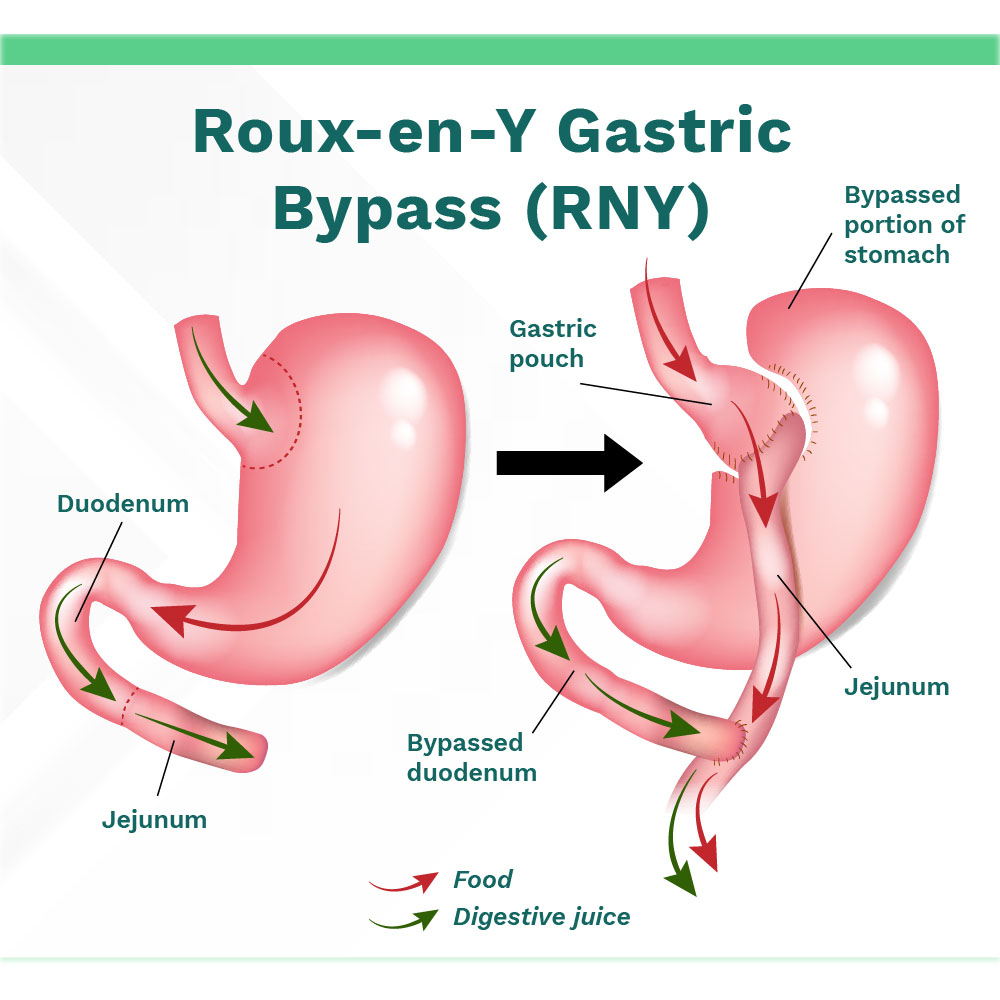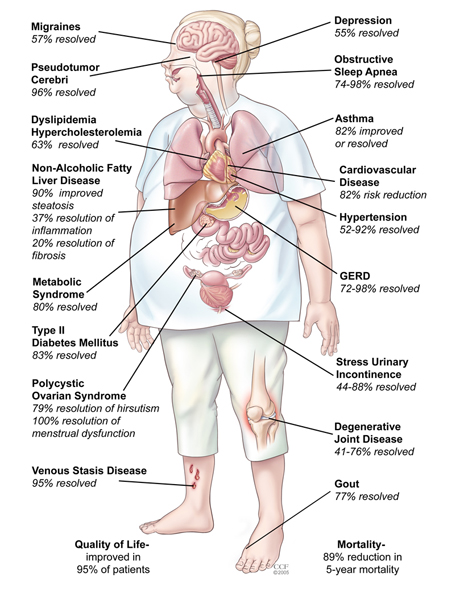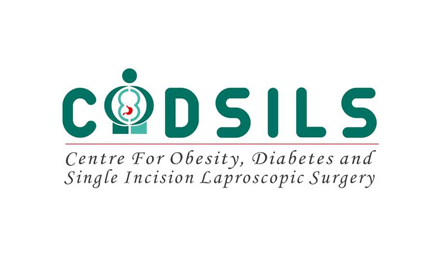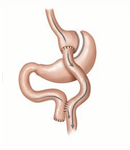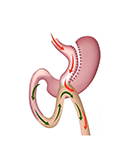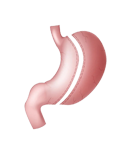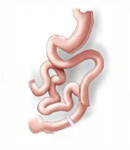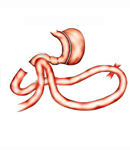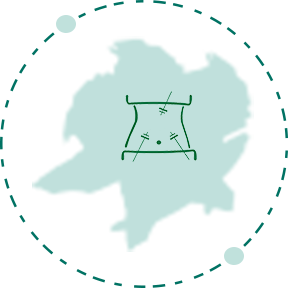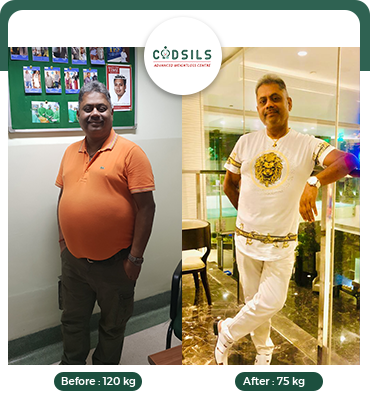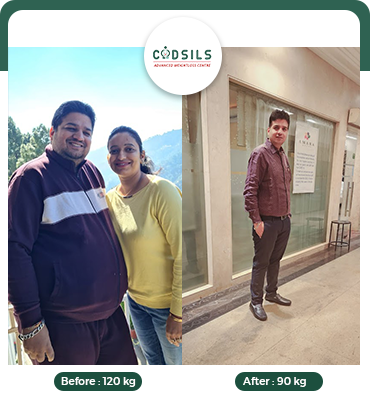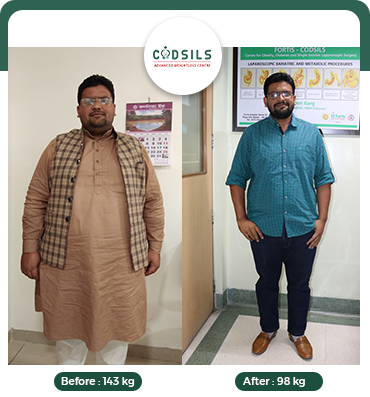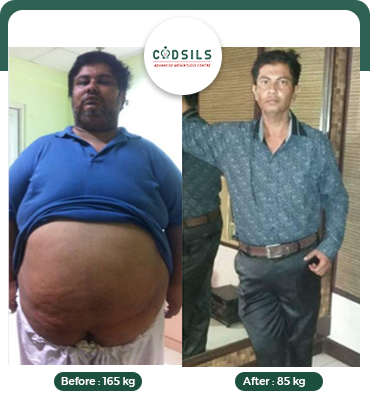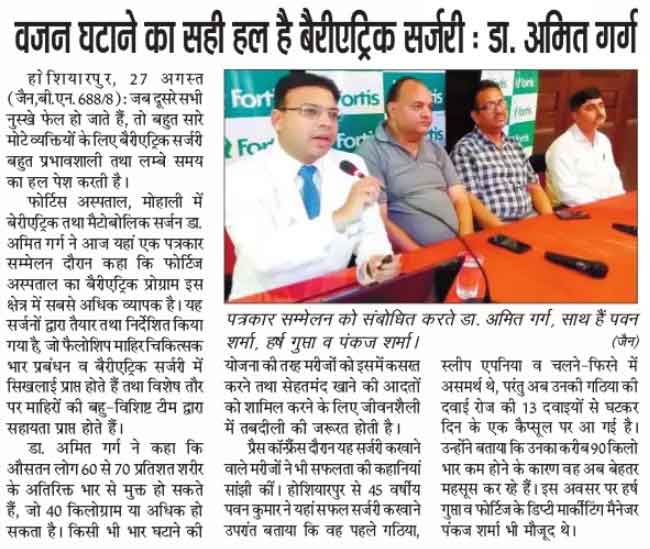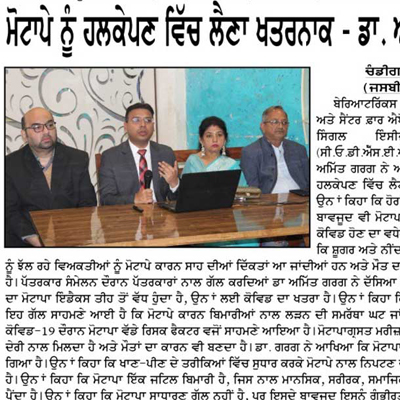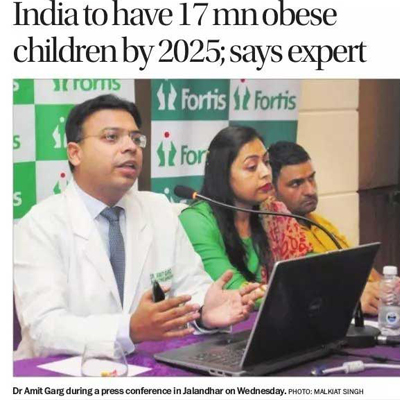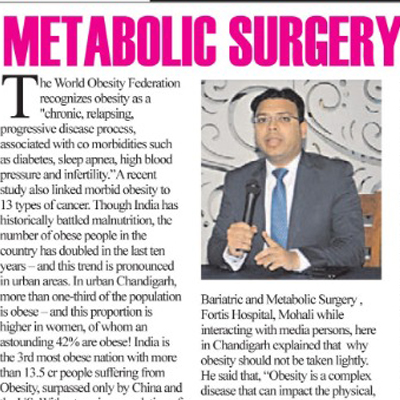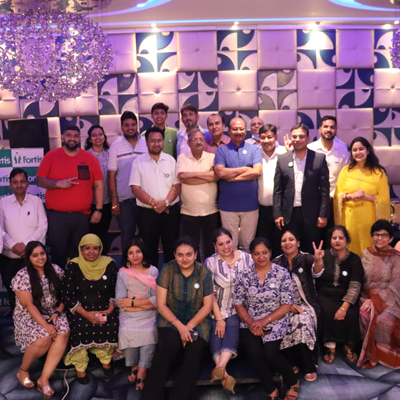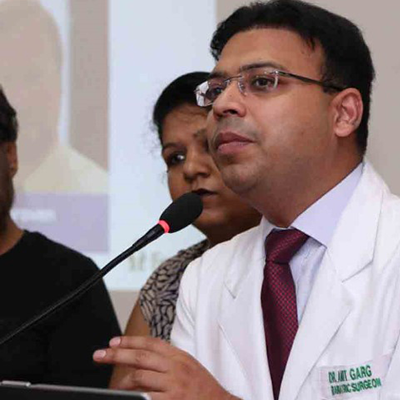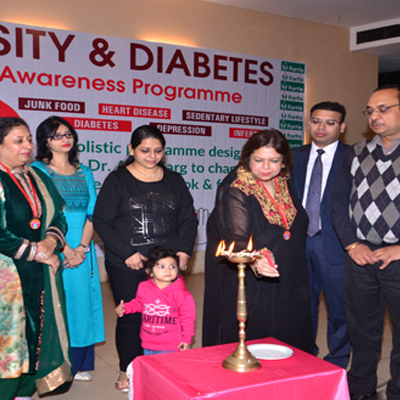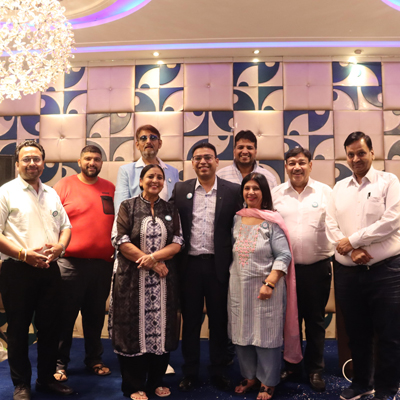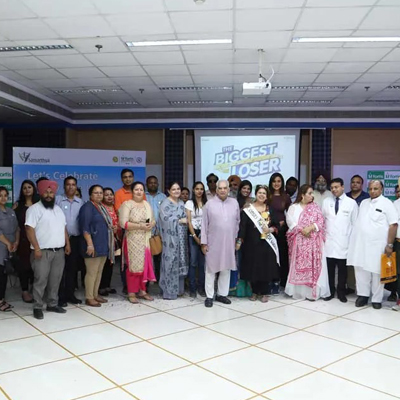Laparoscopic Roux-en-Y Gastric Bypass (LRYGB) in Punjab-Dr Amit Garg | Fortis Hospital (Mohali)
Laparoscopic Roux-en-Y Gastric Bypass (LRYGB) in Punjab, also known as Mini gastric bypass surgery, is a mixed restrictive and malabsorptive weight loss procedure offered in Punjab, India. This surgical intervention involves creating a new, small gastric pouch and rearranging the digestive tract to limit food intake and reduce calorie absorption, resulting in significant and sustained weight loss.
During LRYGB, specialized stapling instruments are used to create a small 30 cc gastric pouch without removing the remaining stomach. The outlet of this pouch is connected to the small intestine, bypassing a portion of the intestine and redirecting digestive juices back into the common channel in a “Y” shape hookup, hence the name Roux-en-Y Gastric Bypass. This arrangement leads to early satiety, reduced appetite, and decreased calorie absorption, resulting in substantial weight loss ranging from 60% to 80% of excess weight over approximately 2 years.
Dr. Amit Garg , a leading weight loss surgeon in Punjab with over 10 years of experience, specializes in performing LRYGB. Dr. Garg’s expertise includes addressing severe reflux issues and controlling type 2 diabetes through modified Roux-en-Y Gastric Bypass, which has shown promising results in diabetes remission. Despite advancements in other procedures like gastric sleeve and mini gastric bypass, LRYGB remains a powerful and effective option for select patients with specific health concerns.
